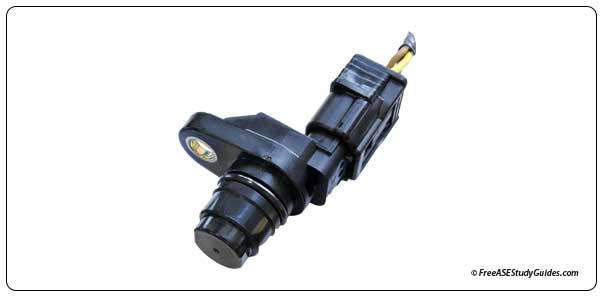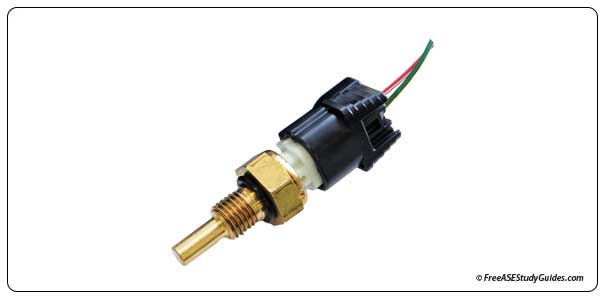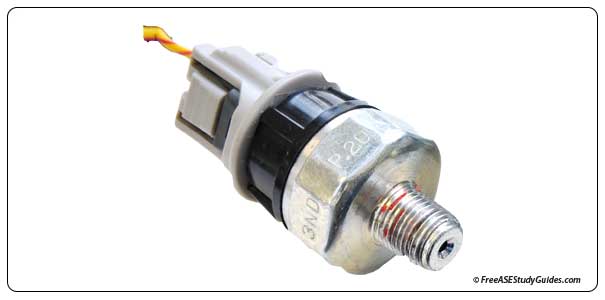Engine Input Sensors

The sensor above is a permanent magnet sensor. Engine manufacturers use permanent magnet sensors like crankshaft and camshaft position sensors as position sensors. All distributorless (EI) electronic ignition systems require a crankshaft position sensor. Most engines have either a hall effect or a magnetic impulse triggering system. A permanent magnet crankshaft position sensor is located behind the harmonic balancer or directly on the engine block.
Engine Coolant Temperature Sensor

Engine coolant temperature sensors or (ECT) sensors are variable resistors that use resistance to alter a 5-volt reference signal from the ECM. The sensor's signal changes according to the engine's coolant temperature. It's a vital component for maintaining an engine's normal operating temperature. Its job is to sense the temperature of the engine's coolant.
Throttle Position Sensor

The Throttle Position (TP) sensor found on the throttle body of a fuel-injected engine is a potentiometer, a variable resistor used to alter voltage in a circuit. The ECM uses the TP sensor signal to detect throttle plate angle and engine load. The ECM and the TCM share the TP signal over the network. This sensor, along with the vehicle speed sensor, is used by the TCM to provide optimal shift timing.
Oil Pressure Switch

The oil pressure switch signals directly to the driver's instrument panel or the engine control module. It indicates if the engine's oil pressure has fallen below a critical level of around 3-10 psi, depending on the engine. Gauge-sending units are often variable resistors. The oil pressure sending unit above is a simple pressure switch.

The switch can be normally open or normally closed. Most are (NC) normally closed, so the oil pressure warning light illuminates when the engine is first started and goes out after oil pressure increases.